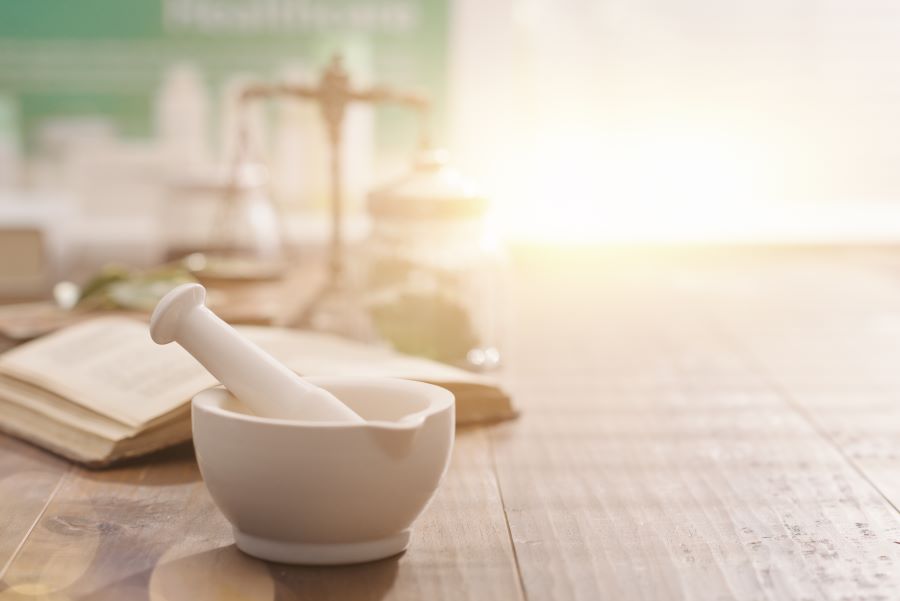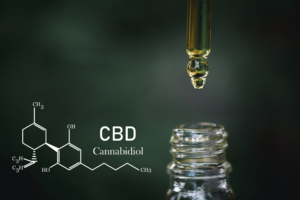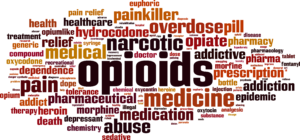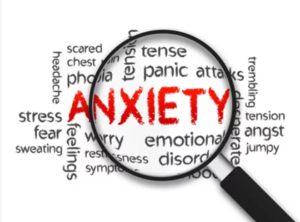Background and purpose:
With no definitive source of information in the industry and the FDA offering little guidelines, it’s difficult to know who to trust when considering CBD. People are left to forage on their own as CBD shops are starting to pop up on every street corner and you can even buy your CBD at the local gas station or liquor store. CBD is everywhere and professional guidance is practically impossible to find. This vacuum of information is pleading for help, and expertise, that I think only a pharmacist can provide. Our profession combines years of clinical study on how drugs work in our bodies along with expertise on homeopathic medications. And you can rely on one of “America’s most trusted professions” to advocate what is best for you and your health.
In this blog, we will learn about the Endocannabinoid System (ECS), how it works and the effects it has on the body. This will help us to understand how to properly dose CBD and learn that “low and slow” is the best way to go. Everyone’s ECS is different and there can be a wide disparity in how we metabolize Phytocannabinoids such as CBD.
We will review how THC and CBD work together and their effects inside the body. We will also look at other proposed effects that the ECS has and how it may help with other disease states. And lastly, I will present a dosing chart to help give you a solid starting point with which to begin this therapy.
Endocannabinoid System:
It is a widely held belief that the ECS is the 12th system of the body similar to the endocrine, renal, and respiratory systems. It has been proposed to have wide-ranging effects on functions such as thermoregulation, appetite, metabolism, mood, pain, energy, inflammation and many more.
The ECS is made up of primarily two main receptors- CB1 and CB2. CB1 receptors are mainly found in the brain and CB2 mainly in our immune system, organs and peripheral nerves. The effects of these receptors are varied and the ECS exerts an effect on other cannabinoid receptors such as TRPV1 (inflammation and pain), GPR18 (sensory, thermoregulation, pancreatic function), GPR55 (intracellular calcium) and GPR119 (incretin and insulin regulation).
Through all these hormones and receptors, the main function of the ECS is to maintain homeostasis (state of steady internal, physical, and chemical conditions as maintained in the body.) The ECS exerts its effects thru excreting two main neurotransmitters that are known as anandamide and 2-AG (arachidonoylglycerol). These endocannabinoids (internal cannabinoids) are affected by the phytocannabinoids (plant based) cannabidiol or CBD. One of the effects of CBD is to delay the natural metabolism of anandamide and 2-AG by inhibiting the activity of FAAH (fatty acid amide hydrolase). FAAH is an enzyme in the body whose main function is to deactivate its own endocannabinoids.
THC vs CBD:
CBD and THC can be seen as close cousins and have some similar effects and also some critical differences. THC is a direct CB1 and CB2 agonist, meaning it irreversibly binds to these receptors and produces a much higher amount of 2-AG and anandamide than what we would normally see in the body. THC is a potent activator of the ECS but also has many draw backs such as tolerance, paranoia, and hallucinations.
The government in 2018 allowed the cultivation of the hemp plant if the percentage of THC was at or less than 0.3%. Many formulations of CBD take out the THC all-together in a method similar to how caffeine is extracted from the coffee bean (CO2 extraction). What is interesting about these two Phytocannabinoids (THC & CBD) is that they work better together than apart. CBD reduces the metabolism of THC so there is less of the active metabolite that causes the “high” sensation, and it also decreases the paranoia and tolerance that normally come along with this therapy.
The question that we must ask is if the amount of THC in a legal CBD formulation is enough to have a quantifiable effect. It is important to have all the parts of the hemp plant when consuming CBD (this is called the “entourage effect”) because there are over 100 different kinds of cannabinoids in addition to terpenes and flavonoids. There is some uncertainty with how strong of an effect the 0.3% THC has in our body and is postulated to have an effect similar to “waking up” the CB1 and CB2 receptors. For people that work in jobs where they are routinely drug tested, taking a 0% THC formulation makes sense, and both formulations have been found to be effective in producing positive results.
Dosing Background:
CBD is metabolized by the CYT P450 enzyme in the liver, so care should be taken when starting patients with multiple health issues, especially when on blood thinners or cholesterol lowering agents. Any medication with the caution to avoid grapefruit juice should be used cautiously with CBD.
I recommend “micro-dosing” to start, which helps to decrease potential side effects such as drowsiness, stomach upset, and vivid dreams. I have included a chart which gives a starting point for patients that are new to CBD, depending upon the severity of their symptoms and body weight. Everyone’s ECS responds differently, so starting slowly is essential to understanding how each person will respond to CBD.
Micro-dosing implies starting at ½ the regular dose for at least 1-2 weeks, and slowly titrating up to a full recommended daily intake over the next 1-2 months. Doses over 33mg should be divided up evenly throughout the day. I do not recommend taking at bedtime if the patient is naïve to therapy as this tends to aggravate potential side effects.
Dosing formulations:
Since CBD is so heavily metabolized by the liver, other routes of administration have been created to gain a more robust effect from each individual dose. Some studies have reported the sublingual method doubles the amount of CBD absorbed by the body.
Oral formulations (capsules and softgels) are useful and do have a place in the CBD world. When ingested orally, the time of absorption is much longer when compared to the tincture. A more prolonged effect ensues which can be desirable for most people depending on their conditions. There are other forms new to the market like inhalers and transdermal patches but less is known about these methods and I am waiting for more information before personally recommending.
There are no formal guidelines issued by the FDA for dosing but that will eventually change. For the purposes of this blog, my philosophy is to be conservative and build up slowly. There are not any hard limits on the amount of CBD consumed, but overall effectiveness is not linear with the dosage. Usually 2-3 times the recommend starting dose is a good rule of thumb, and most people do not see additional benefit beyond 100mg per day.
In general, the tincture gives a faster, higher peak and wears off more quickly than the longer, slower absorption observed when taking orally. Many people use a combination of these 2 methods for maximum effect.
Topical:
The topical formulation has also been found to be effective and is a solid alternative for those who are leery to take the oral formulation of CBD . I usually recommend applying 2-3 times per day based on the severity of the symptoms and nothing less potent than 250mg CBD per ounce.
You can also download the pdf here.
CBD Dosing chart | ||||||
Quality of symptoms | Weight (pounds) | |||||
30-59 | 60-89 | 90-129 | 130-170 | 180-230 | 230+ | |
Mild (1-3) | 6mg | 9mg | 13mg | 17mg | 25mg | 33mg |
Moderate (4-6) | 9mg | 13.5mg | 20mg | 25mg | 37mg | 41mg |
Severe (7-10) | 12mg | 18mg | 26mg | 34mg | 46mg | 50mg |
Dosing with 500mg bottle in 30ml bottle | ||||||
Symptoms | 30-59 lbs | 60-89 lbs | 90-129 lbs | 130-170 lbs | 180-230 lbs | 230+ |
Mild (1-3) | 0.4ml | 0.5ml | 0.8ml | 1ml | n/a | n/a |
Moderate (4-6) | 0.6ml | 0.75ml | 1.2 | 1.5 | n/a | n/a |
Severe (7-10) | 0.8ml | 1.0ml | 1.5 | 2ml | n/a | n/a |
Dosing with 1000mg in 30ml bottle | ||||||
Symptoms | 30-59 lbs | 60-89 lbs | 90-129 lbs | 130-170 lbs | 180-230 lbs | 230+ |
Mild (1-3) | n/a | n/a | 0.4ml | 0.5ml | 0.75ml | 1.0ml |
Moderate (4-6) | n/a | n/a | 0.6ml | 0.75ml | 1.1ml | 1.25 |
Severe (7-10) | n/a | n/a | 0.8ml | 1.0ml | 1.4ml | 1.5ml |
Dosing with 1500mg in 30ml bottle | ||||||
Symptoms | 30-59 lbs | 60-89 lbs | 90-129 lbs | 130-170 lbs | 180-230 lbs | 230+ |
Mild (1-3) | n/a | n/a | 0.25ml | 0.3ml | 0.5ml | 0.7ml |
Moderate (4-6) | n/a | n/a | 0.4ml | 0.5ml | 0.75ml | 0.9ml |
Severe (7-10) | n/a | n/a | 0.5ml | 0.7ml | 0.9ml | 1.0ml |
Dosing Chart for all strengths | ||||||
MG per CBD bottle | 250mg | 500mg | 1000mg | 1000mg | 1500mg | 1500mg |
Bottle size | 30ml | 30ml | 30ml | 30ml | 30ml | 30ml |
1ml dose | 8.3mg | 16.7mg | 33.4mg | 33.4mg | 50.1mg | 50.1mg |
0.75ml dose | 6.3mg | 12.6mg | 18.9mg | 18.9mg | 25.2mg | 25.2mg |
0.5ml dose | 4.2mg | 8.3mg | 16.7mg | 16.7mg | 25mg | 25mg |
0.25ml dose | 2.1mg | 4.2mg | 6.3mg | 6.3mg | 8.4mg | 8.4mg |
**You can also view a cleaner version of this chart with my Google document here.
The views in this document are expressly the opinion of Sean Gale RPh, and are not meant to treat, diagnose, prevent or cure any disease states or medical conditions. Please consult your physician before beginning any CBD therapy. These statements have not been evaluated or approved by the FDA. Buyer is to consume CBD at their own risk. I may be reached for further questions at [email protected]




